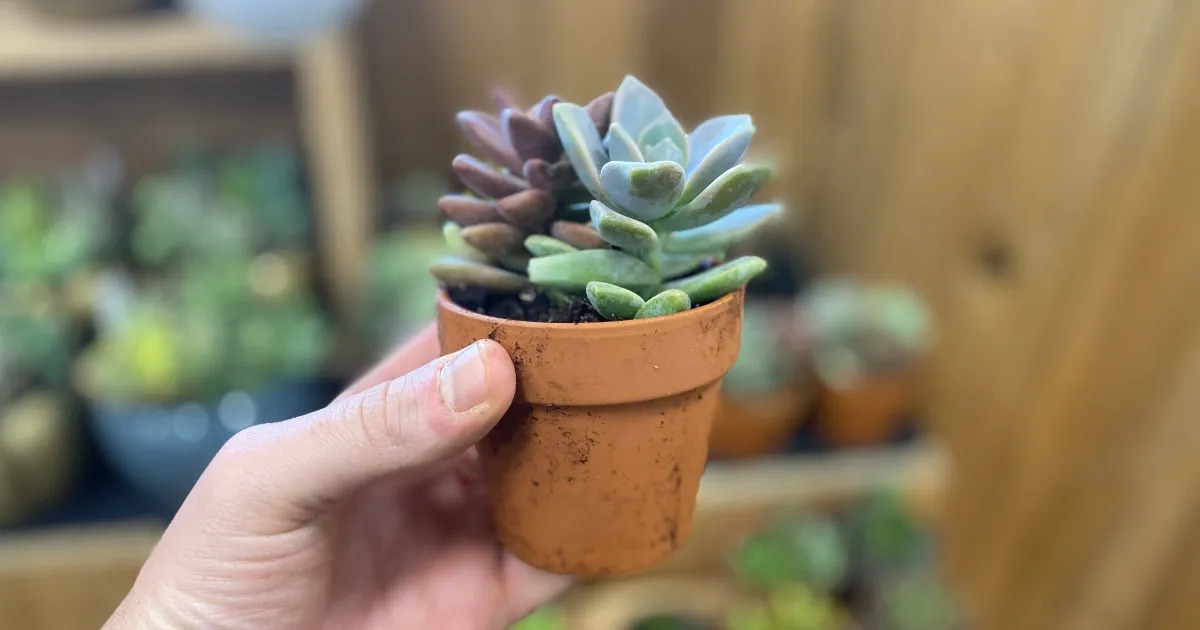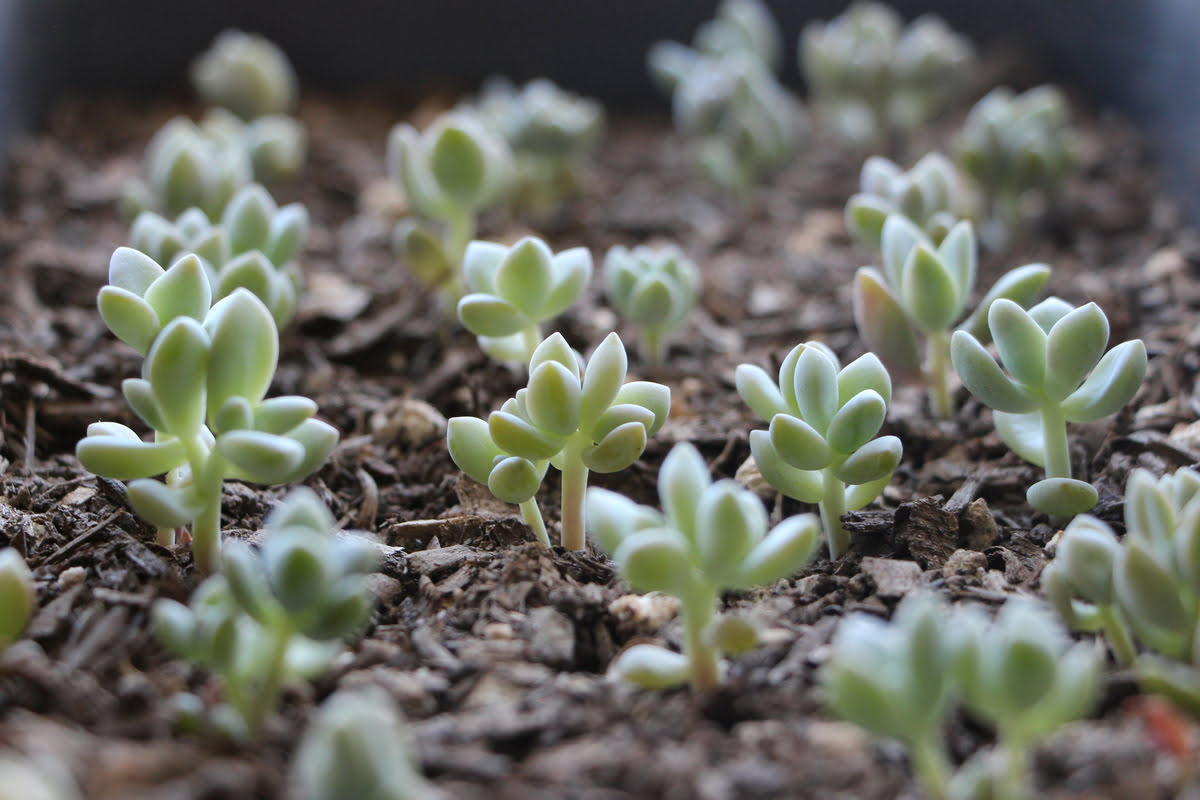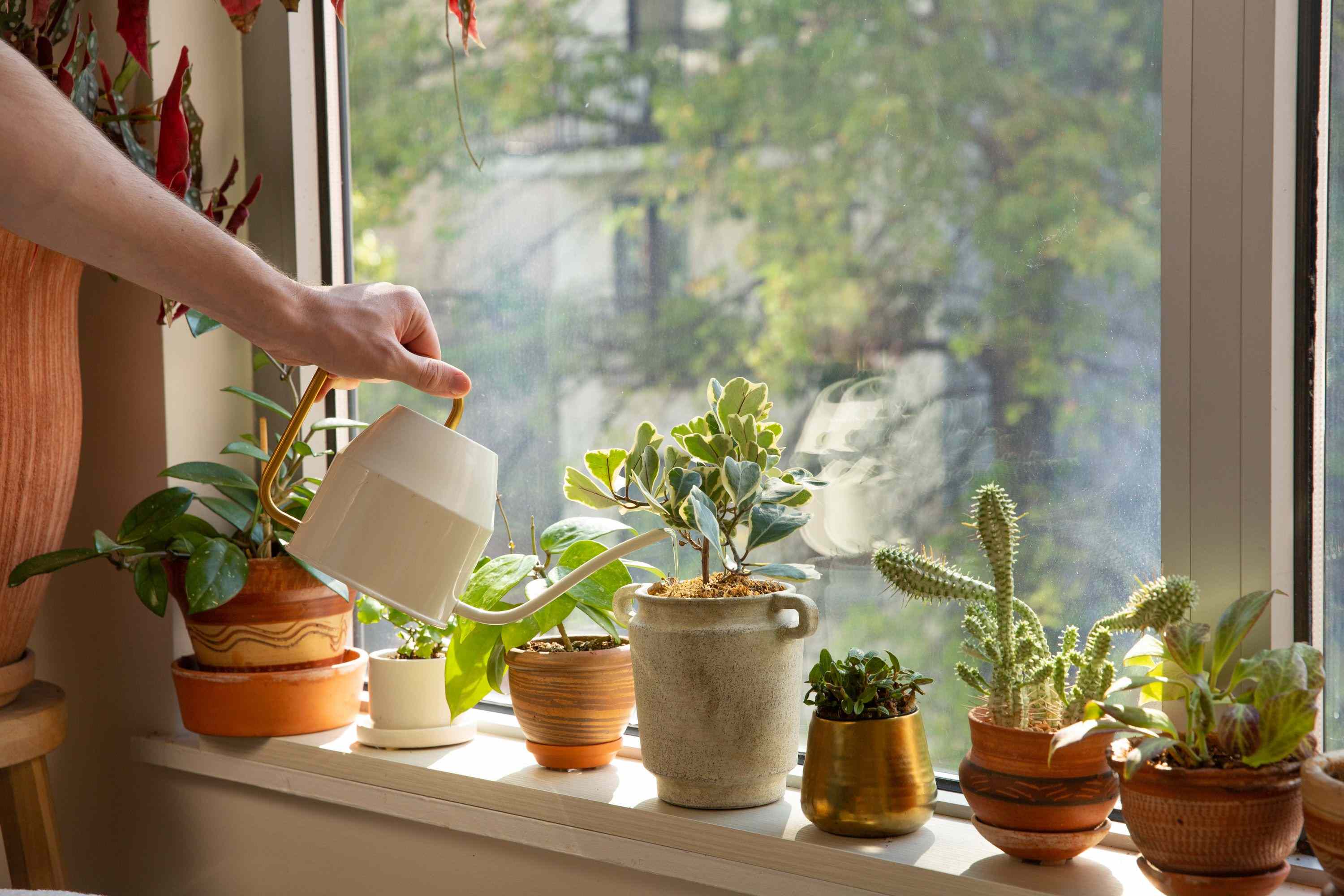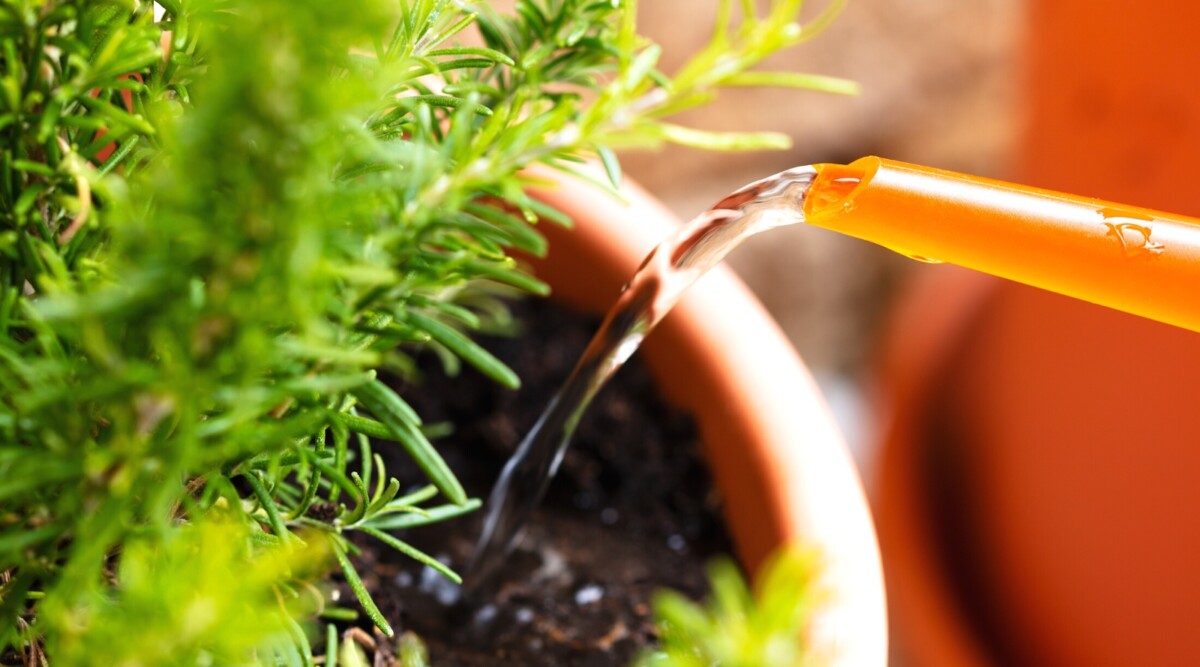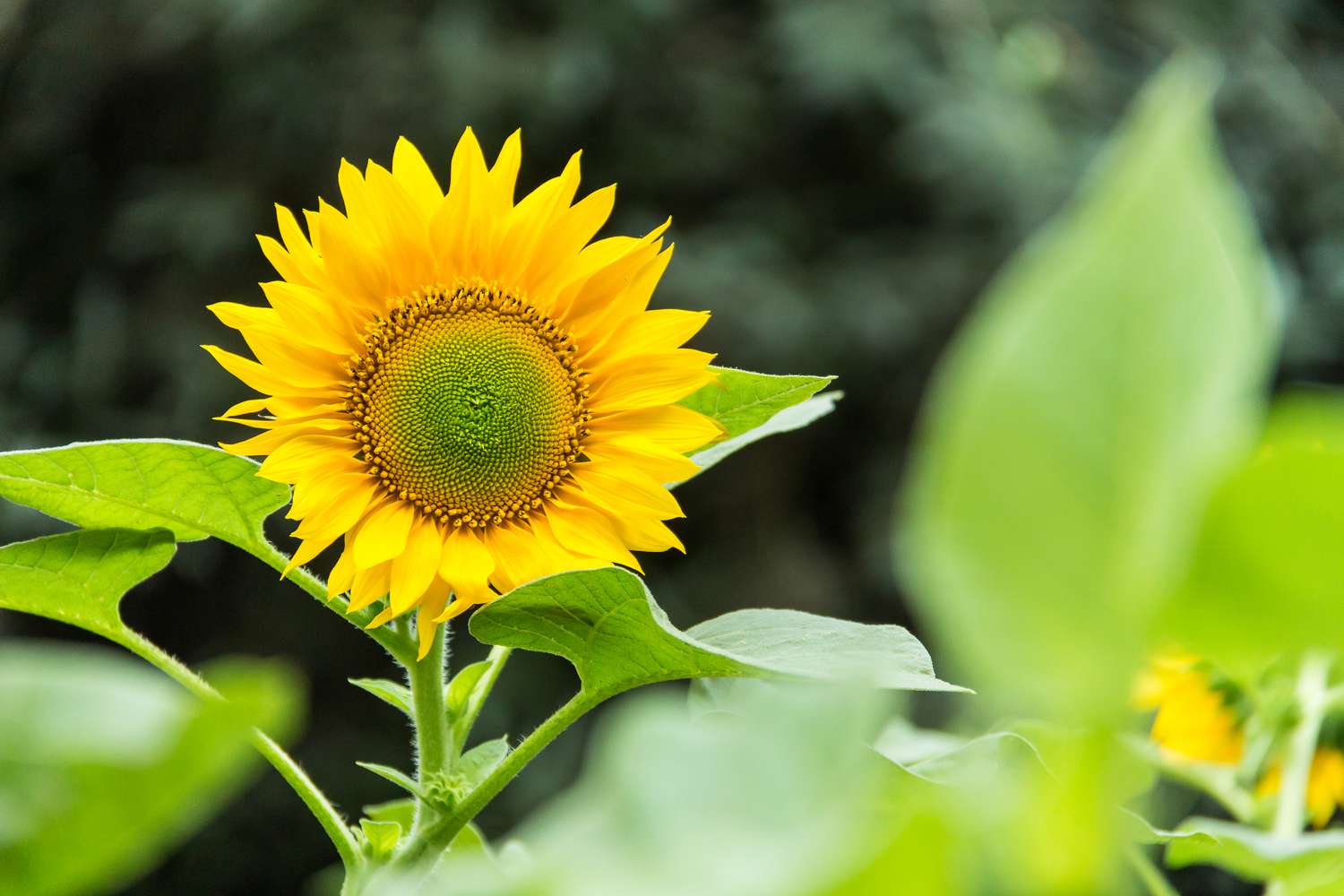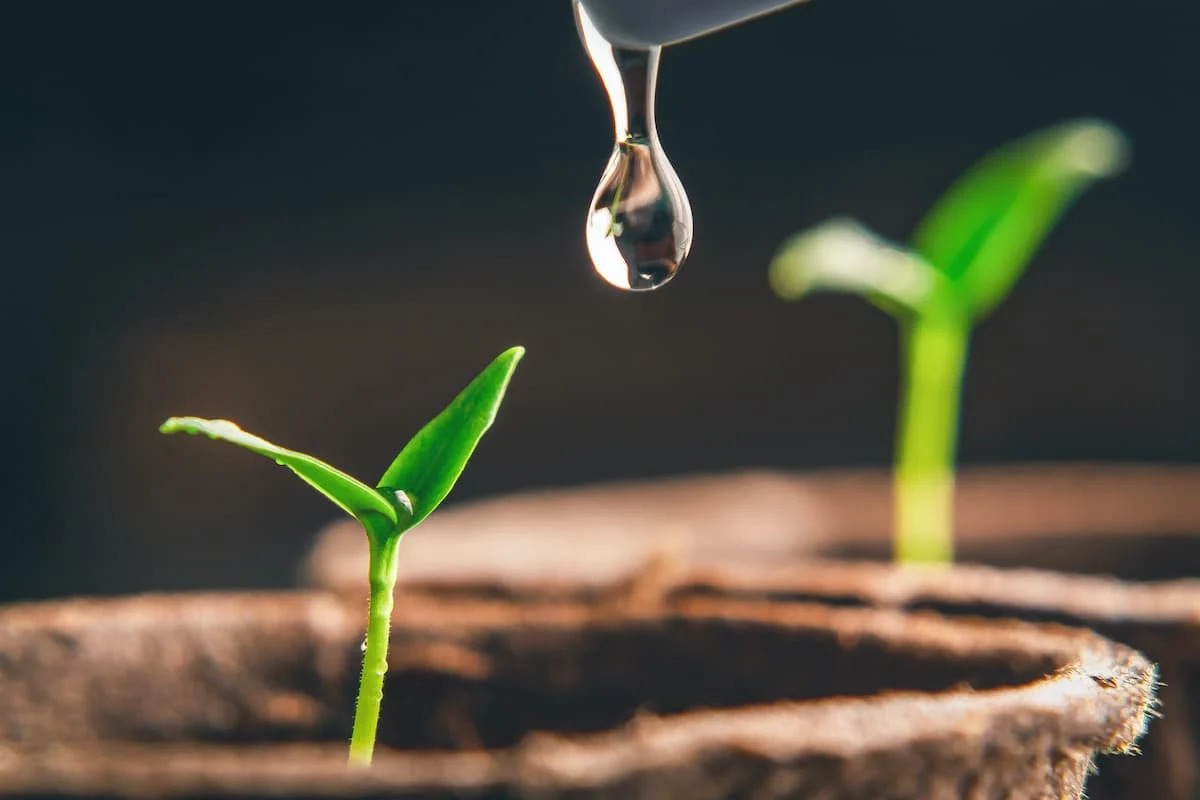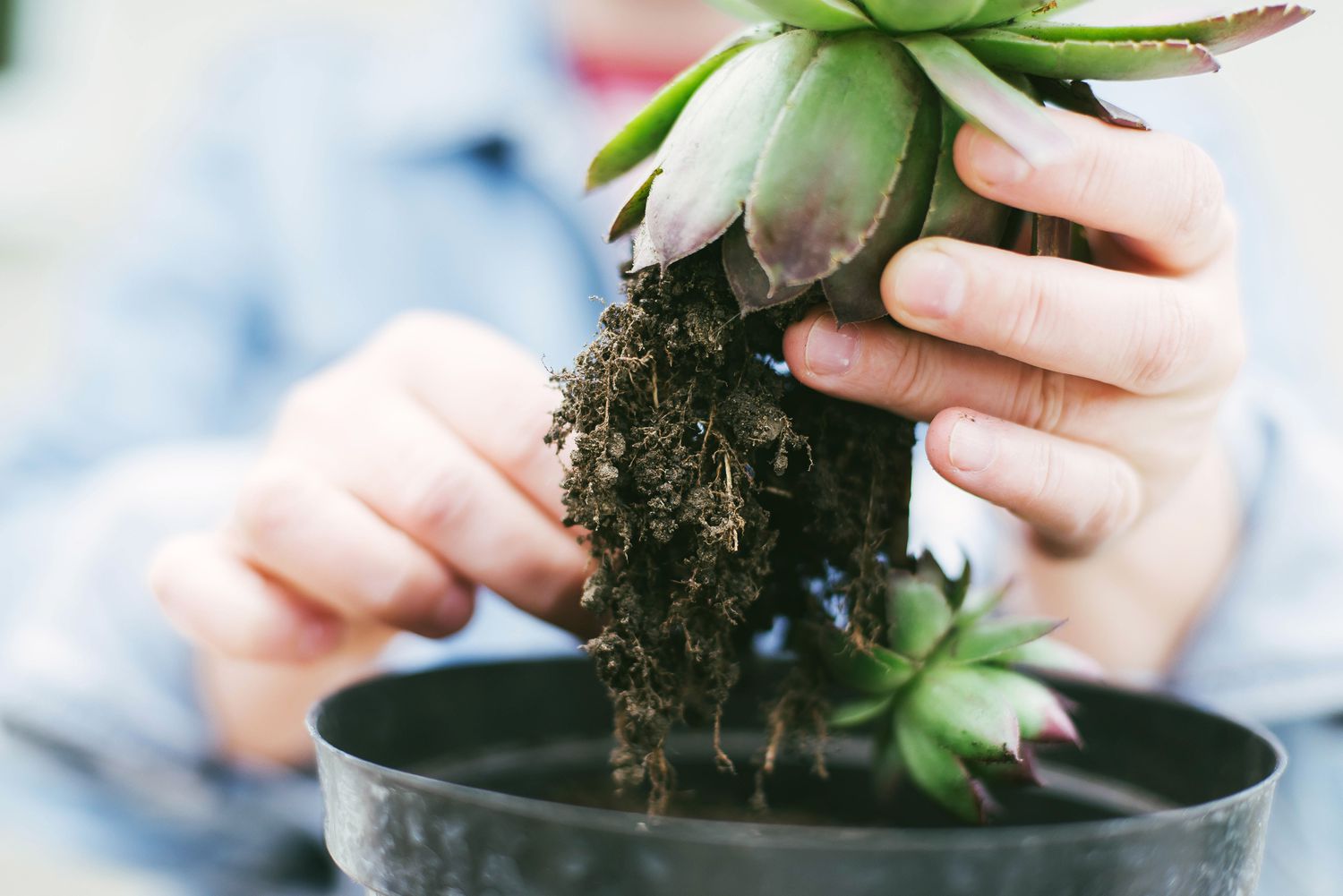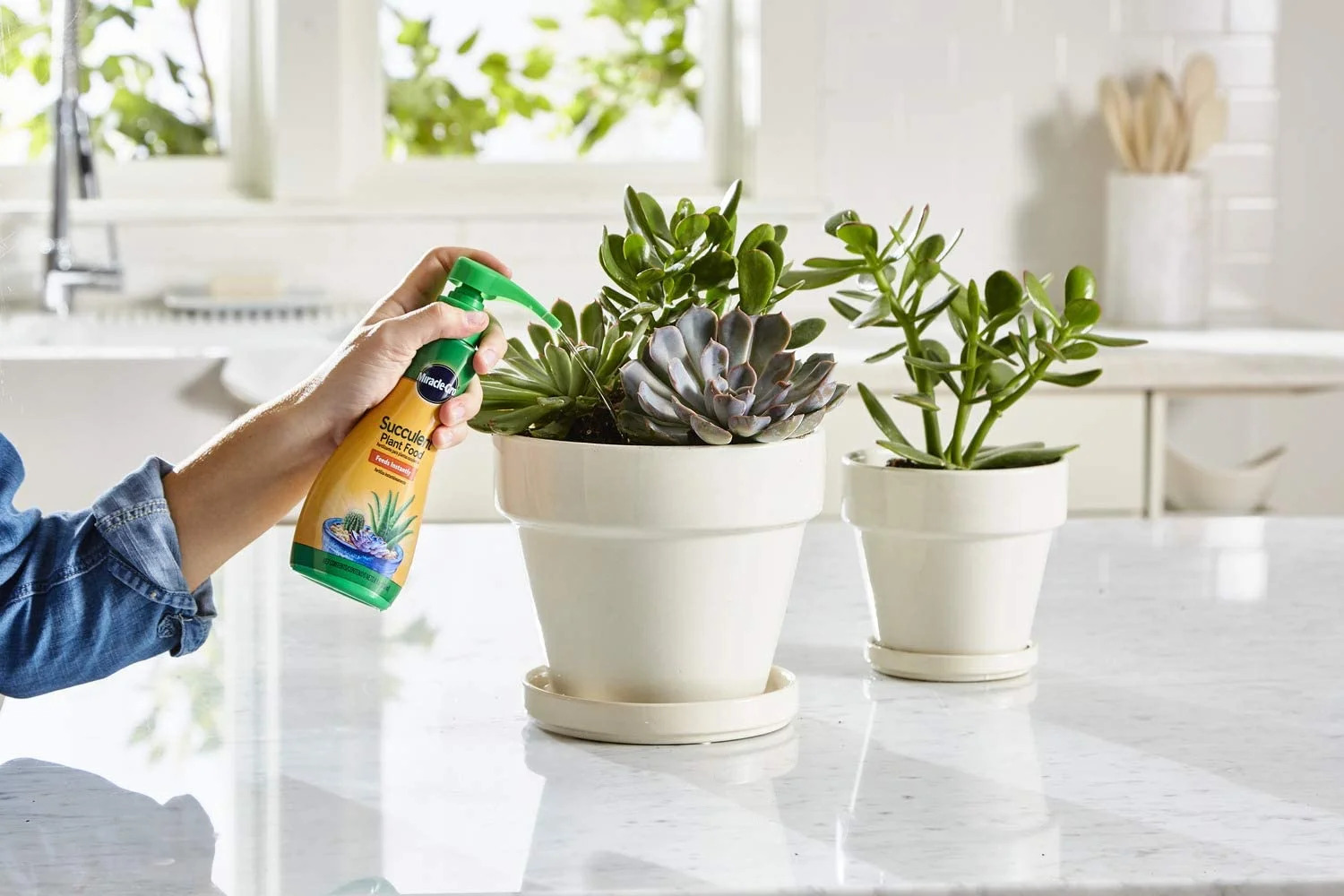Home>Gardening Techniques>Plant Care>How Often Do I Water Indoor Succulents
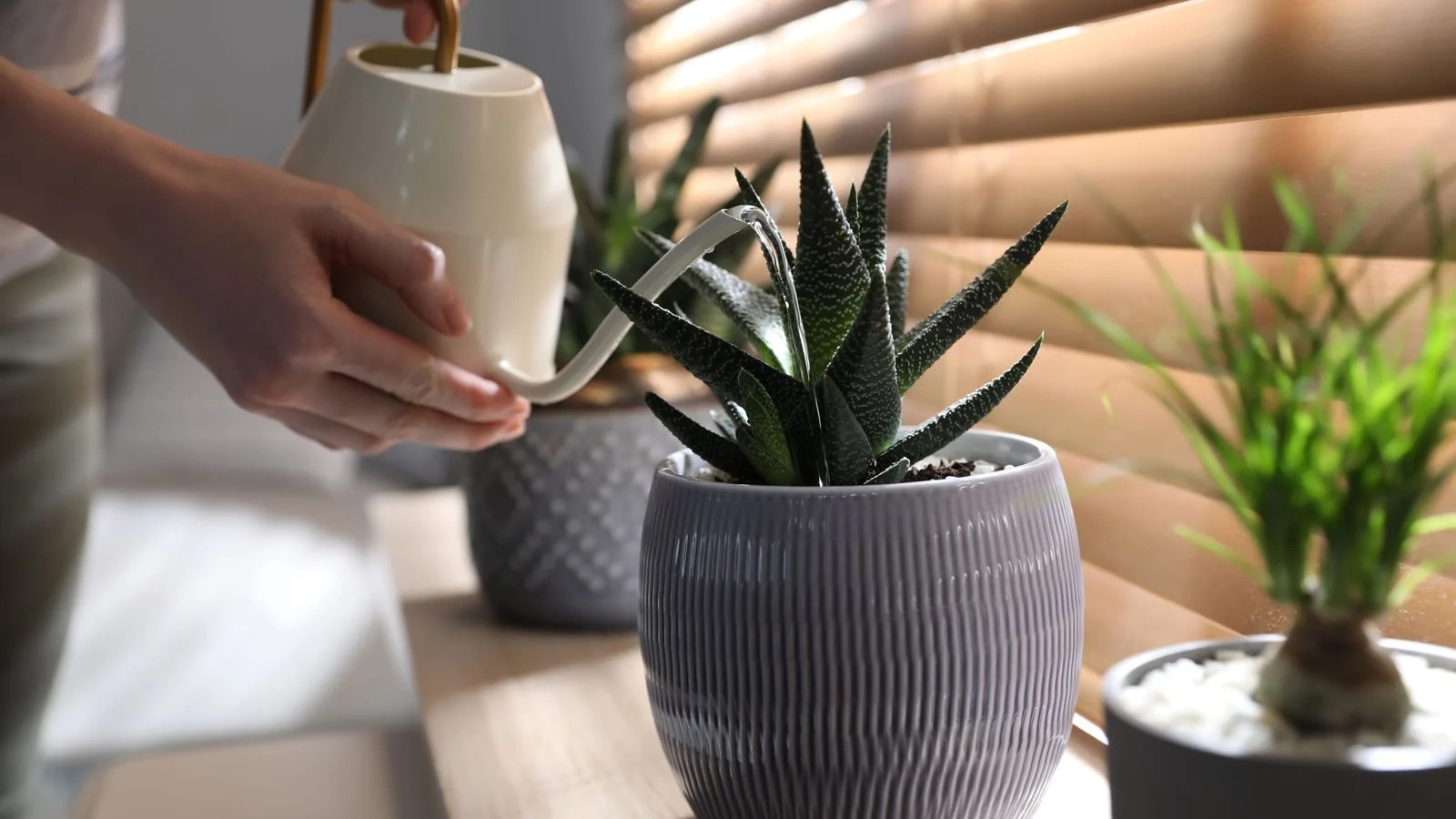

Plant Care
How Often Do I Water Indoor Succulents
Modified: February 9, 2024
Learn the best plant care tips for watering indoor succulents. Discover how often to water your succulents to keep them healthy and thriving.
(Many of the links in this article redirect to a specific reviewed product. Your purchase of these products through affiliate links helps to generate commission for Chicagolandgardening.com, at no extra cost. Learn more)
Table of Contents
- Introduction
- Understanding Indoor Succulents
- Factors to Consider when Watering Indoor Succulents
- Different Watering Needs for Various Types of Indoor Succulents
- Signs of Overwatering and Underwatering Indoor Succulents
- How Often to Water Indoor Succulents
- Watering Techniques for Indoor Succulents
- Common Mistakes to Avoid when Watering Indoor Succulents
- Conclusion
Introduction
Welcome to the world of indoor succulents! These unique and fascinating plants are known for their ability to thrive in arid conditions, making them a popular choice for indoor gardening enthusiasts. But when it comes to caring for succulents, one of the most common questions is: How often should I water them?
Watering indoor succulents can be a bit tricky, as they have specific needs that differ from other houseplants. Too much water can lead to root rot and other issues, while too little water can cause dehydration and stunted growth. Therefore, finding the right balance is crucial for the health and well-being of your succulents.
In this article, we will delve deep into the world of watering indoor succulents. We will explore the factors to consider when determining the watering needs of your succulents, examine the signs of overwatering and underwatering, and provide tips and techniques for watering these beautiful plants.
Whether you’re a beginner succulent gardener or a seasoned pro looking to refine your watering routine, this article aims to equip you with the knowledge and insights you need to keep your indoor succulents thriving.
So, grab your watering can and get ready to dive into the fascinating world of indoor succulent care!
Understanding Indoor Succulents
Before we can determine the proper watering routine for indoor succulents, it’s essential to understand the nature of these plants. Succulents are a diverse group of plants that store water in their leaves, stems, or roots. This adaptation allows them to survive in harsh desert environments with limited access to water.
When grown indoors, succulents still retain their water-storing capabilities. However, the conditions inside our homes are quite different from their natural habitat. Indoor environments often have lower humidity levels and less direct sunlight, which can impact the water requirements of succulents.
It’s important to remember that succulents have evolved to survive in arid regions, and their roots are adapted to absorb water efficiently. Overwatering can lead to root rot, a condition in which the roots become waterlogged and start to decay. On the other hand, underwatering can cause the succulent to become dehydrated, resulting in stunted growth and wilting leaves.
Understanding the needs of your specific succulent species is crucial for providing the right care. Succulents come in various sizes, shapes, and colors, and each has its unique requirements. Some common types of indoor succulents include the popular Aloe vera, Echeveria, Haworthia, and Jade plants.
Take the time to research the specific species you have in your collection. Find out their native habitat and natural watering patterns. This information will provide valuable insights into how often you should water your indoor succulents.
Additionally, pay attention to the growth cycle of your succulents. Some species may go through a dormant period where they require less water, while others may have active growth throughout the year. Understanding these different growth phases will help you adjust your watering schedule accordingly.
Now that we have a better understanding of indoor succulents let’s delve into the factors to consider when determining their watering needs.
Factors to Consider when Watering Indoor Succulents
When it comes to watering indoor succulents, several factors come into play. Understanding these factors is crucial in determining the proper watering routine for your plants. Let’s take a closer look at them:
- Succulent Type: Different succulent species have varying water needs. Some succulents, like Aloe vera and Jade plants, prefer drier conditions and can tolerate longer periods between waterings. Others, such as Haworthia and Echeveria, may require more frequent watering. Research the specific requirements of your succulent species to ensure you are providing them with the appropriate amount of water.
- Potting Medium: The type of potting medium used for your indoor succulents can affect their moisture levels. Well-draining soil mixes specifically designed for succulents are ideal, as they allow excess water to quickly drain away. Avoid using heavy soils that retain moisture for extended periods, as they can lead to overwatering and root rot.
- Pot Size: The size of the pot also plays a role in watering frequency. Smaller pots tend to dry out more quickly, requiring more frequent watering, while larger pots retain moisture for longer periods. Ensure that your succulents are planted in pots with drainage holes to prevent water from pooling at the bottom and causing root issues.
- Light and Temperature: The amount of light and the temperature of your indoor space can influence the watering needs of succulents. In bright, sunny areas, succulents may require more frequent watering as the increased light and heat can cause faster evaporation. Conversely, in low light conditions, succulents may need less water as there is less evaporation. Observe how the light and temperature fluctuate in your indoor environment and adjust your watering routine accordingly.
- Seasonal Changes: Succulents may require adjustments to their watering schedule based on seasonal changes. During the warmer months when succulents are in their active growing phase, they may require more water. However, in the colder months when growth slows down, watering frequency may need to be reduced to prevent overwatering. Always monitor your plants and make adjustments as needed.
- Finger Test: One handy way to determine if your succulents need water is by performing the finger test. Simply insert your finger into the potting soil up to the first knuckle. If the soil feels dry, it’s time to water your succulents. However, if it still feels slightly moist, hold off on watering for a few more days.
By considering these factors and adapting your watering routine accordingly, you can provide the optimal care for your indoor succulents, promoting healthy growth and preventing water-related problems.
Different Watering Needs for Various Types of Indoor Succulents
When it comes to watering indoor succulents, it’s important to understand that different types of succulents have varying water requirements. Here, we will explore the different watering needs for various types of indoor succulents:
- Aloe vera: Aloe vera plants are known for their fleshy leaves that store water. These succulents thrive in arid conditions and prefer to be slightly dry between waterings. Water your Aloe vera deeply, allowing the excess water to drain out completely before watering again. During active growth periods, water once every two to three weeks, and reduce watering frequency in the dormant season.
- Echeveria: Echeveria succulents have beautiful rosette-shaped leaves and appreciate well-draining soil. Water your Echeveria thoroughly when the soil is completely dry, allowing the excess water to drain away. During the growing season, it’s recommended to water every week or two. In the winter months, reduce watering frequency to once every three to four weeks.
- Haworthia: Haworthia plants are small, low-growing succulents that tolerate bright light and shade. These succulents have shallow root systems and prefer to be slightly dry between waterings. Water your Haworthia deeply, allowing the water to reach the roots. As a general guideline, water once every two weeks during the growing season and reduce watering frequency in the winter months.
- Jade plant: Jade plants are popular indoor succulents with thick, fleshy leaves. These plants store water in their leaves, which means they can tolerate periods of drought. Water your Jade plant thoroughly when the top inch of soil is dry. Allow excess water to drain away, and refrain from watering again until the soil is dry. During the growing season, water once every two to three weeks. In the winter, reduce watering frequency to once every four to six weeks.
- Sedum: Sedum succulents, also known as stonecrops, come in a variety of shapes and sizes. These succulents prefer slightly dry conditions and can tolerate dry spells. Water your Sedum deeply when the soil is dry, allowing excess water to drain away. During active growth periods, water every two to three weeks. In the dormant season, reduce watering frequency to once every four to six weeks.
Keep in mind that these watering guidelines are general recommendations. It’s always best to observe your individual plants and adjust your watering routine based on their specific needs. Remember to check the moisture level of the soil using the finger test and make sure to provide proper drainage to prevent waterlogging.
By understanding the different watering needs of various types of indoor succulents, you can provide the appropriate care for each plant, promoting their overall health and longevity.
Signs of Overwatering and Underwatering Indoor Succulents
Proper watering is essential for the health and well-being of indoor succulents. However, it’s easy to unintentionally overwater or underwater these plants, which can lead to various problems. Here are the signs to look out for to determine if your indoor succulents are being overwatered or underwatered:
Signs of Overwatering:
- Yellowing or translucent leaves: Overwatered succulents may develop yellow or translucent leaves. This occurs due to the excess water causing the roots to become waterlogged, leading to root rot and poor nutrient uptake.
- Mushy or soft leaves: Healthy succulent leaves should be firm and plump. If the leaves feel mushy or soft to the touch, it indicates overwatering. The excessive moisture causes the leaves to swell and lose their structure.
- Wilting or drooping stems: Contrary to popular belief, wilting or drooping stems are often a sign of overwatering, not underwatering. The roots become damaged and unable to absorb water properly, resulting in the plant’s inability to support its stems.
- Mold or fungus: Excessive moisture creates a favorable environment for mold or fungus growth. If you notice fuzzy white patches or dark spots on the soil’s surface, it could indicate overwatering and poor air circulation around the roots.
Signs of Underwatering:
- Shriveled or wrinkled leaves: When succulents lack water, their leaves will start to shrink and wrinkle. This is a natural defense mechanism to conserve water and survive in arid conditions.
- Dull, discolored leaves: Insufficient moisture causes succulent leaves to lose their vibrant color. They may appear pale or faded, indicating dehydration.
- Slow or stunted growth: Underwatered succulents may exhibit slow or stunted growth. Lack of water affects the plant’s ability to carry out essential processes, resulting in reduced growth rates.
- Dry or brittle leaves: Succulents deprived of water will have dry, brittle leaves that are more prone to breakage. The lack of moisture results in the loss of leaf turgidity and flexibility.
Remember that these signs may vary depending on the specific succulent species and environmental conditions. It’s crucial to evaluate multiple factors when determining if your succulent is being overwatered or underwatered. Adjust your watering routine and monitor your plants closely to prevent further damage and promote their overall health.
How Often to Water Indoor Succulents
Determining the frequency of watering for indoor succulents can be a balancing act. While it’s important to avoid overwatering, it’s equally critical to ensure that your succulents receive enough water to sustain their growth and health. Here are some guidelines to help you determine how often to water your indoor succulents:
1. Consider the environment: The environmental conditions in your home play a significant role in determining watering frequency. Factors such as temperature, humidity, and light levels can affect how quickly the soil dries out. In general, succulents prefer a well-draining soil that dries out between waterings. Assess the conditions in your home and adjust your watering schedule accordingly.
2. Adopt a “soak and dry” approach: A common watering method for succulents is the “soak and dry” technique. This method involves thoroughly watering the soil until water seeps out of the drainage holes, ensuring that the roots get adequately hydrated. Allow the soil to dry out completely before watering again. Inserting your finger into the soil up to the first knuckle can help determine when it’s time to water again.
3. Take into account the growth cycle: Succulents have growth cycles and may require different watering frequencies depending on their active or dormant phases. During the active growing season, typically spring and summer, succulents may need more frequent watering to support their growth. In contrast, during the dormant period, often in fall and winter, succulents generally require less water.
4. Monitor the moisture level of the soil: Checking the moisture level of the soil is essential in determining when to water your indoor succulents. Use the finger test by inserting your finger into the soil up to the first knuckle. If the soil feels dry, it’s time to water. However, if it feels slightly moist, hold off on watering for a few more days to prevent overwatering.
5. Observe the plant’s behavior: Your succulents will often give you visual cues that indicate their watering needs. Pay attention to the appearance and behavior of your plants. If the leaves start to appear wilted or feel thin and shriveled, it’s a sign that they need water. However, if the leaves look plump and vibrant, and the plant appears healthy, it’s a good indication that watering frequency is appropriate.
Ultimately, the key to determining how often to water your indoor succulents lies in finding the right balance between providing enough water to sustain their growth and allowing the soil to dry out between waterings to prevent overwatering. Remember that it’s better to underwater than to overwater, as succulents are more tolerant of drought conditions. Pay attention to the unique needs of each succulent species, observe the environmental conditions, and adjust your watering routine accordingly for thriving and healthy indoor succulents.
Watering Techniques for Indoor Succulents
Proper watering techniques are essential for the health and well-being of indoor succulents. By using the right watering techniques, you can ensure that your plants receive the right amount of water without risking overwatering or underwatering. Here are some effective watering techniques for indoor succulents:
1. Bottom watering: One effective technique for watering indoor succulents is bottom watering. This method involves placing the pot in a tray or saucer filled with water. Allow the plant to absorb water through the drainage holes at the bottom until the topsoil becomes moist. Once the soil is sufficiently moist, remove the pot from the water and let it drain thoroughly to prevent water accumulation.
2. Watering from the top: Watering from the top is another common watering method for indoor succulents. Use a watering can with a narrow spout and pour water directly onto the soil around the base of the plants. Be careful not to let water accumulate on the leaves as this can promote the growth of mold or cause them to rot.
3. Spraying: Spraying is an ideal technique for small succulent arrangements or plants with delicate foliage. Fill a spray bottle with water and mist the soil lightly, ensuring the water reaches the roots without saturating the soil. Frequent light sprays can help provide adequate moisture while preventing overwatering.
4. Drench and dry: The “drench and dry” technique involves thoroughly saturating the soil during each watering session and allowing it to dry out completely before watering again. This technique mimics the natural rainfall patterns in succulents’ native habitats, promoting deep root growth and preventing waterlogging.
5. Adjusting frequency based on season: As the seasons change, indoor succulents may experience different moisture needs. During the active growing season, typically spring and summer, succulents may require more frequent watering to support their growth. In contrast, in the dormant period, often in fall and winter, watering frequency should be reduced to prevent overwatering.
Remember to use well-draining potting soil specifically designed for succulents. The soil should allow excess water to flow out of the drainage holes, preventing water from accumulating around the roots. Additionally, avoid watering during the hottest part of the day to minimize the risk of leaf burn, and always use room temperature water to prevent shock to the roots.
By utilizing these watering techniques and adapting them to the specific needs of your indoor succulents, you can provide appropriate moisture levels and promote healthy growth and vibrant foliage.
Common Mistakes to Avoid when Watering Indoor Succulents
While watering indoor succulents may seem simple, there are common mistakes that many succulent enthusiasts make. Avoiding these mistakes can help ensure the health and longevity of your plants. Here are some common mistakes to avoid when watering your indoor succulents:
1. Overwatering: Overwatering is one of the most common mistakes made when caring for succulents. Succulents store water in their leaves, stems, or roots, and they are adapted to thrive in arid conditions. Excessive watering can lead to root rot and other issues. Avoid the temptation to water too frequently and provide the appropriate amount of water based on the specific needs of each succulent species.
2. Using improper soil: Another mistake is using soil that doesn’t provide proper drainage. Succulents require well-draining soil to prevent water from accumulating around the roots. Using standard potting soil that retains moisture can lead to overwatering and root rot. Opt for a specialized succulent or cactus mix, or create your own well-draining mixture using components like perlite, sand, or pumice.
3. Watering on a schedule: Setting a fixed watering schedule for your succulents can be problematic. Each succulent has different water requirements, and factors such as humidity, temperature, and seasonality can affect their watering needs. Instead of following a rigid schedule, assess the moisture level of the soil and the overall health of the plant. This will help you determine when it’s the right time to water.
4. Underwatering: While overwatering is a common mistake, underwatering can also be detrimental to succulents. Insufficient water can lead to dehydration, stunted growth, and wilted leaves. Be attentive to the moisture needs of your succulents and adjust your watering routine accordingly. Remember that underwatering is generally less harmful than overwatering, as succulents can withstand periods of drought.
5. Ignoring environmental conditions: Environmental conditions play a crucial role in watering succulents. Factors such as temperature, humidity, and light levels can affect how quickly the soil dries out. Take into account these environmental factors when determining your watering routine. Adjust the frequency and amount of water based on the specific conditions in your home.
6. Watering during the wrong time of day: Watering succulents during the hottest part of the day can be detrimental. The water droplets on the leaves can act as magnifying glasses, intensifying the sunlight and potentially causing burns or damage to the foliage. It’s best to water your succulents in the early morning or late afternoon when the temperatures are cooler.
7. Neglecting to check for proper drainage: Succulents are susceptible to root rot if water accumulates in the pot without proper drainage. Always make sure that your pots have drainage holes to allow excess water to escape. Additionally, avoid using pots with saucers that collect water, as the soil can remain saturated for extended periods.
By avoiding these common mistakes and learning to adapt your watering routine to the specific needs of your indoor succulents, you can provide the optimal care, ensuring their health and longevity.
Conclusion
Caring for indoor succulents can be a rewarding and enjoyable experience, and getting the watering routine right is essential for their health and longevity. Understanding the unique needs of your succulents, considering factors such as succulent type, potting medium, pot size, light and temperature, seasonal changes, and performing the finger test can help you determine when and how often to water your plants.
By avoiding common mistakes like overwatering, using improper soil, and neglecting environmental conditions, you can provide optimal care for your indoor succulents. When watering, consider techniques such as bottom watering, watering from the top, spraying, and the “drench and dry” method to ensure adequate moisture without risking waterlogging or underwatering.
Remember, each succulent is unique, and the watering needs may vary based on species, growth cycle, and environmental conditions. Observation and adjustment are key. Pay attention to the signs of overwatering and underwatering, and make the necessary changes to your watering routine to address those issues.
Overall, by following these guidelines and continually learning about your specific succulents, you will develop a watering routine that suits their individual needs. With proper watering techniques, you can assist your indoor succulents in thriving, promoting vibrant foliage, and adding beauty to your home or office space.
